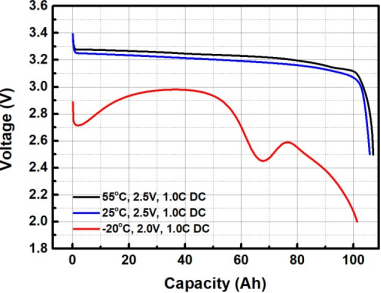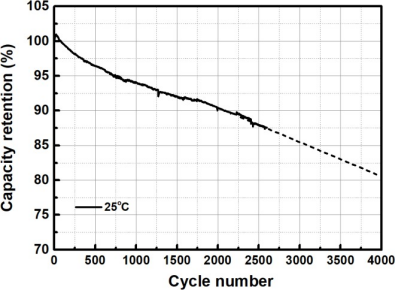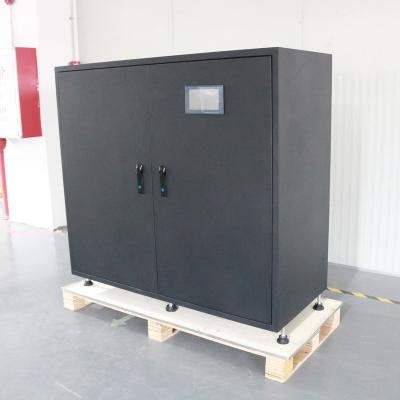



| Price | Negotiable |
| MOQ | 100pcs |
| Delivery Time | 2~4weeks for samples; 4~6weeks for mass production |
| Brand | XD BATTERY |
| Place of Origin | Beijing, China |
| Certification | MSDS,UN38.3, UL1642, CE,IEC |
| Payment Terms | L/C; TT |
| Supply Ability | 450Mwh/year |
| Brand Name | XD BATTERY | Payment Terms | L/C; TT |
| Place of Origin | Beijing, China | Price | Negotiable |
| Delivery Time | 2~4weeks for samples; 4~6weeks for mass production | Minimum Order Quantity | 100pcs |
| Supply Ability | 450Mwh/year | Certification | MSDS,UN38.3, UL1642, CE,IEC |
Currently, lithium batteries are becoming more and more popular. Especially on solar energy storage systems and UPS (Uninterruptible Power Supply) Lithium ion HV system, etc. For the lithium iron phosphate battery cells, the single cell voltage is nominal rated 3.2V, all voltage, current, power (kW) and energy (kwh) applications are based on this. High voltage lithium battery system usually refers to the battery system voltage is greater than or equal to 96V, for example, 192V 50Ah battery system is 1P60S (60 cells series connected) cell connection based on 50Ah single cell capacity, 240V 50Ah battery is 1P75S cell connection, 384V 100Ah battery is 1P120S cell connection based on 100Ah cell, etc. We also can parallel cell first for double or triple total capacity. The corresponding battery capacity is usually 50Ah, 100Ah, 150Ah, 200Ah, etc.
EVE 384v battery
| Nominal Voltage(V) | 384 |
| Nominal Capacity(Ah) | 100 |
| Nominal Energy(Wh) | 38400 |
| Dimension(W*H*D) | 600*1800*850mm |
| Weight(Kg) | 650 |
| Internal Resistance( mΩ) | ≤200 |
| DC discharge nominal voltage | 384Vdc (LFP-120S) |
| Rang of DC discharge voltage | 300~438Vdc |
| DC normal charge voltage | 438±2.0Vdc |
| DC float charge voltage | 420±2.0Vdc |
| Allowed MAX charge current | 100Adc |
| Allowed MAX discharge current | 100Adc |
| Recommended charge current | ≤50Adc |
| Communication | ≤50Adc |
| IP rating | IP21 |
| Storage environment | -20~+60℃,5~75%RH |
| -10~+45℃,5~75%RH | |
| 15~35℃,5~75%RH |
Advantage:
1.
Rechargeable
and
deep
cycle:more
than
5000+Times
cycles
2.
High
quality
and
high
efficient:GOTION
brand
A+
grade
battery
cell
3.
Easy
to
install
and
maintain
4.
Energy
saving
and
environmental
protection
5.
Protection
level
IP20
6.
Battery
manager
system
build-in
7.
Accept
OEM/ODM
Standard
Charge
At
(25±2)℃,
the
cell
is
charged
by
a
constant
current
of
0.5C
(A)
to
the
cut-off
voltage
3.65V,
then
kept
at
this
voltage
until
the
current
is
less
than
0.05C
(A).
| No. | Item | Requirements | Measuring Procedure |
|
|
|
|
After standard charged, the cell undergo a rest for 1h, then is discharged by current 0.5C(A),1.0C(A) respectively to cut-off voltage 2.5V. This test is allowed to be repeated for 3 times if the discharge capacity fails to meet the technical requirements. |
|
|
|
|
A)
After
standard
charged,
the
cell
undergo
a
rest
for
5h
at
(55±2
)℃,
then
is
discharged
by
current
1.0C(A)
to
cut-off
voltage
2.5V; |
|
|
|
|
After standard charged,the cell undergo a rest for 28 days, then is discharged by current 1.0C(A) to cut-off voltage 2.5V. The discharge capacity is capacity retention. After standard charged again,the cell undergo 30min’s rest , then is discharged by current 1.0C(A) to cut-off voltage 2.5V. The discharge capacity is capacity recovery. |
|
|
|
|
At (25±2)℃, 300kgf clamp force: the cell is charged by current 1.0C (A) to 3.65V, then kept at this voltage until the current is less than 0.05 C(A), followed by 30min rest, subsequently the cell is discharged by current 1.0C (A) to 2.5V . Cycle continues until the capacity decays to 80% of the nominal capacity |
|
|
|
|
|
Safety
Performance
| No. | Item | Requirements | Measuring Procedure |
| 1 | Overdischarge | No fire,explosion,electrolyte leakage |
|
| 2 | Overcharge | No fire,explosion | |
| 3 | Shortcircuit | No fire,explosion | |
| 4 | Dropping | No fire,explosion,electrolyte leakage | |
| 5 | Heating | No fire,explosion | |
| 6 | Crushing | No fire,explosion | |
| 7 | Prisking | No fire,explosion | |
| 8 | Seawater immersion | No fire,explosion | |
| 9 | Temperature cycle | No fire,explosion,electrolyte leakage | |
| 10 | Low pressure | No fire,explosion,electrolyte leakage |
Transportation
The
cells
should
be
packed
into
boxes
under
the
charge
of
30%
~
50%SOC.
During
the
transportation,
they
should
be
protected
from
severe
vibration,
shock
,
extrusion,
sun
or
rain.
Storage
Cells
should
be
stored
(more
than
1
month)
indoor
with
a
dry
and
clean
environment
at
0
℃~35
℃,
and
charged
and
discharged
every
6
months.
Keep
the
last
charge
under
30%~
50%SOC.
Attentions
1,
It
is
necessary
to
ensure
that
the
voltage,
current
and
temperature
of
the
cell
are
monitored
and
protected
when
the
cell
is
charged
and
discharged.
2,
Please
keep
the
cell
away
from
heat
source,
fire
source
,
strong
acid,
strong
alkali
and
other
corrosive
environment.
3,
Do
not
short
connect
or
install
the
battery
with
incorrect
polarity
at
any
time.
4,
Do
not
mix
up
with
cells
from
different
models
or
manufacturers.
5,
Do
not
use
external
force
to
make
the
cell
fall,
impact,
puncture,
do
not
disassemble
the
cell
or
change
the
external
structure.
6,
Please
keep
the
cell’s
charge
under
30%
~
50%SOC,
and
avoid
direct
sunlight
or
high
temperature
and
humidity
environment
when
the
battery
is
not
used
for
a
long
time,
7,
Please
wear
protective
devices
such
as
rubber
gloves
when
operating
the
battery.
8,
Please
immediately
stop
using
if
there
have
leakage,
smoking
or
damage
with
cell
,
and
contact
our
company
to
deal
with.
Two-dimensional
Diagram
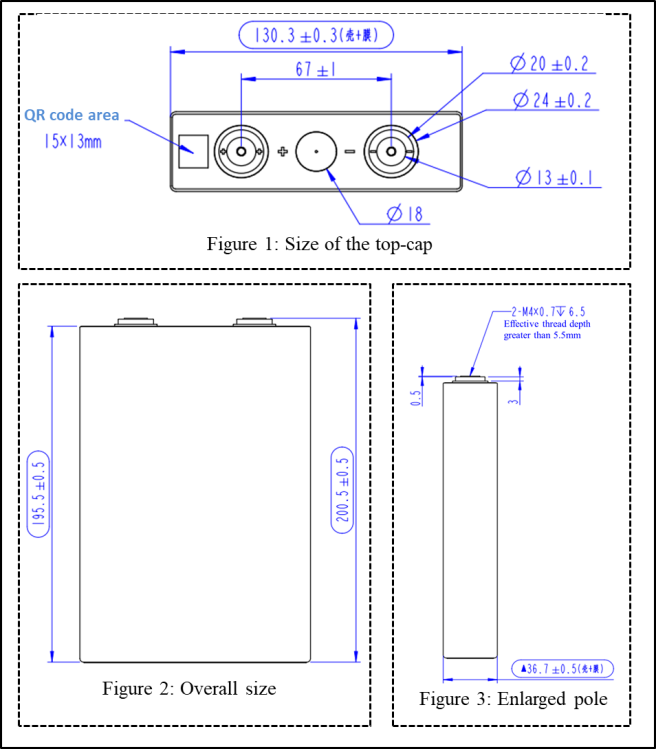
Electrical
Performance
Diagram
Rate
discharge
curve
at
25℃
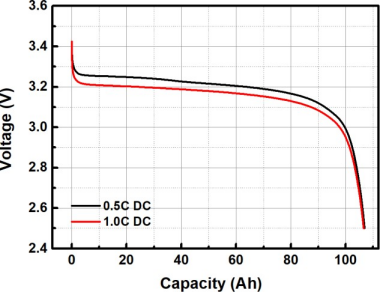
Discharge
curves
at
different
temperature
